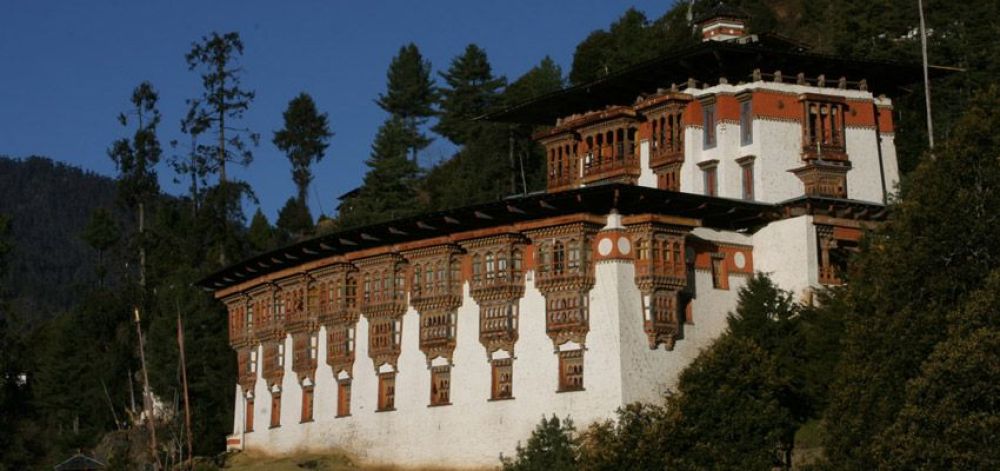

The Tango Buddhist Institute, also known as Tango Monastery, is a prominent Buddhist institute located north of the capital city Thimphu in Bhutan. It is a significant place of learning and meditation for monks in Bhutan and stands as an emblem of the country's deep religious heritage. The monastery is intricately linked to the Drukpa Kagyu school of Tibetan Buddhism and has a rich history that dates back several centuries.
The Tango Monastery was founded in the 12th century by Lama Gyalwa Lhanampa and later developed into the current form of the institute by the "Divine madman" Drukpa Kunley in the 15th century. It has been considered sacred since the times when Guru Rinpoche (Padmasambhava) meditated there in the 8th century. The institute’s name ‘Tango’ in Bhutanese language means ‘horse’s head’, inspired by the natural shape of the rock outcrop that resembles a horse’s head, on which Tango is built.
In the early 17th century, the monastery was further expanded by the fourth temporal ruler of Bhutan, Tenzin Rabgye, who is believed to have built many of the current structures during his reign. Since then, it has been an important place for Buddhist studies and meditation.
Tourism in Bhutan, as a whole, is a fairly recent development, largely due to the country's isolationist policies. Bhutan only began to open up to foreign visitors in the 1970s, adopting a strict policy of high-value, low-impact tourism to protect its culture and environment. Tango Buddhist Institute, akin to many other religious sites in Bhutan, was not initially designed to accommodate tourism; it is a place of religious education and practice.
Yet, as Bhutanese tourism has developed, Tango has grown into a significant cultural destination for tourists interested in Buddhism, Himalayan culture, and meditation. The visitor experience at Tango involves a hike up a picturesque hill, an encounter with monastic life, and the viewing of religious art and architecture.
Controlled Tourism: Bhutan continues to implement a sustainable approach to tourism to ensure that visits to sites like Tango do not disrupt the spiritual and ecological balance. The government regulates the number of tourists by imposing a daily tariff and requires all tourists to travel with a registered guide.
Spiritual Tourism: Visitors to Tango Buddhist Institute often seek spiritual enrichment and learning opportunities. The trend of spiritual tourism has seen a rise in visitors engaging in meditation retreats and seeking teachings on Buddhism during their stay.
Cultural Immersion: Tango serves not only as a spiritual center but also as a place where visitors can immerse themselves in Bhutanese culture. Tourists are increasingly interested in experiencing traditional Bhutanese life, festivals, and rituals.
Eco-Tourism: As an extension of Bhutan's overall environmental consciousness, there is an emphasis on eco-tourism. The journey to Tango aligns with this, as visitors hike through pristine forests and are encouraged to respect the natural surroundings.
Visiting Tango Buddhist Institute provides tourists a unique combination of spiritual, cultural, and natural experiences, emblematic of Bhutan's broader tourism ethos. The institute not only imparts a sense of the mystical past but also provides a lens through which visitors can understand the evolution of Bhutanese society and its conservationist approach to life and tourism.